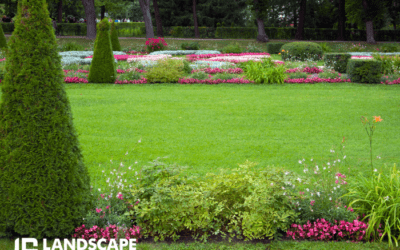
If you’ve recently decided to set up a garden, it can be overwhelming to go through all the technical steps required to ensure your garden will thrive for many years to come.
The art of landscaping is a meticulous but rewarding craft, so here’s an overview of what you can look forward to regarding the landscapers’ process and transform your outdoor space into a lavish garden.
Establish A Garden Bed
To establish a garden bed, there are 3 basic considerations you should keep in mind – location, sun-light and soil.
Location and Set Up
Your garden should be located in a convenient location free of rocks and uneven ground (at least as much as possible). This will make things easier down the road and prevent run-off during rainfall. Once the location of your new garden has been established, your current grass may have to be removed using either sheet mulching or solarization, a process that uses the sun to scorch your grass.
-
-
Sun
Make sure your new garden space is in a location with access to an ample amount of sun. -
Soil
Healthy soil will be added to the area with the correct pH, nutritional content, and soil type for your location and plants you’d want to include in your design.
-
Select Your Plants
This is the most enjoyable part of setting up your garden! The important thing to consider is the types of plants that are either native to your location or thrive in the climate where you live. Most gardens consist of four types of plants, including:
-
- Annuals: Plants that need to be replanted every year, such as petunias or marigolds
- Perennials: Plants that bloom during one part of every year, such as peonies or false indigo
- Edible plants: fruits, veggies, and herbs. Great beginner edible plants are tomatoes, radishes, peppers, berries, and squash.
- Trees & Shrubs
You may want to take into account your plants’ size at maturity, texture, and of course, color palette. Color palette can be used to match your home or building, in addition to evoking specific emotions. For example, warm colors are exciting, while cool colors will relax you and your garden’s admirers.
Get Rid Of Your Weeds
Weeds can ruin your beautiful garden, so it is important to maintain it. During the growing season in the Spring, you may benefit from asking your landscapers to perform a weed removal from your garden, ideally every one to two weeks, to keep it in tip-top shape.
Create A Pest Plan
All pest-removing methods have their pros and cons; however, it depends on your preferences whether you use natural or synthetic methods to remove these pests. Some natural precautions your landscapers may take to avoid the prevalence of pests are:
-
- Lighting: Adding garden lighting is excellent if you want to avoid pests that like to hide in the dark, such as cockroaches. This could range from a physical light to ensuring that your garden isn’t in an area with too much shade.
- Debris: making sure the garden is free of fallen leaves and debris means that bugs that eat those leaves will stay out of the way and the small rodents interested in those insects.
- Mulch: The type of mulch in your garden may be what’s attracting your pests. Most organic things are lovely, but organic mulch is pretty attractive to pests.
- Bug-Repellant Plants: Some plants are natural bug repellants, like chrysanthemums, and are great for repelling creepy crawlies like ticks, ants, beetles, roaches, and silverfish.
If you’re ready for your own inviting outdoor garden space, give Landscaping Solutions a call for a consultation to get started!



